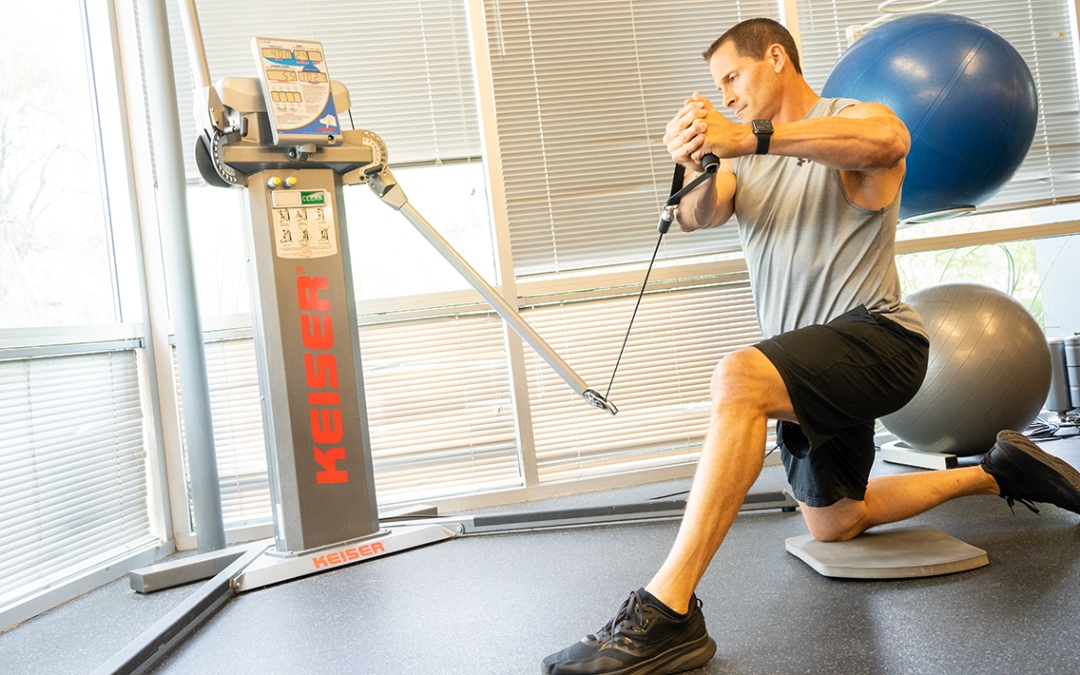By: Torrey Foster, PT, DPT, OCS, FAFS, CSCS
Is one of your goals to have a strong core? Core strength helps with enhancing your athletic performance as well as completing daily tasks. There is a lot of information available as to how to achieve core strength, however Spooner therapists are on your team to help you meet and exceed your goals.
What even is the core?
If you think of the core of the apple, it’s the middle. Similarly, our core is the middle of our body. It includes the musculature of our lower back, abdominals, diaphragm, and pelvic floor. All of these together create pressure and stability for the function of our organs inside our trunk, and they also provide support for our trunk and spine.
Between all of the functional, mobility, and stability needs that the core fulfills, optimal strengthening of the core cannot be achieved in a single plane of motion. The most common core exercises that come to mind are single plane- like a plank or crunches. Now, these aren’t bad exercises, but we want to make sure that we are moving as functionally as possible. Being able to pick up and move an object or succeed in sport requires your core to be supported in three planes of motion (front to back, side to side, and rotationally).
How to get stronger
There are many ways to go about gaining core strength. It depends on your current level of strength, as well as any irritations or limitations you have. Having a program specifically designed to enhance your strengths and to work on weaknesses can help you succeed.
The best way to start is with a physical therapist to help guide you. Physical therapists are movement experts who can assess your strengths and areas of opportunity. Your core muscles are engaged with daily movements, and even more so with exercise and during strenuous activity. A way to think about training is this: We train with multidirectional movements to engage all the muscles needed to be successful, but training one plane of motion (a crunch) or trying to isolate one muscle (rectus abdominus) misses out on the opportunity to engage the core in a way which is functional and translates into more meaningful results – comfortable movement, improved strength, enhanced physique.
As movement experts, we can find the right movement patterns for you that engage your core muscles and minimize extra muscle recruitment. If you experience pain with a movement, that often means you have opportunity to improve mobility and strength – the core typically being a critical component. We, as physical therapists, can test your core and can provide exercise recommendations to help promote more efficient and effective training to help you to achieve your goals.
There are many variables to consider when it comes to core training. Some considerations include position of body, driver (what you are moving – hand, foot, etc.), movement angle, movement height, distance of movement, repetitions, load, speed, along with starting and ending positions. Understanding your specific needs, though, is crucial to building better core strength. Together, we can find the movement patterns that build strength best suited for you.
Schedule an appointment with a Spooner therapist today!

